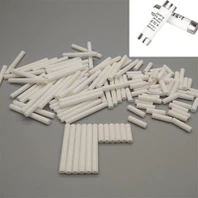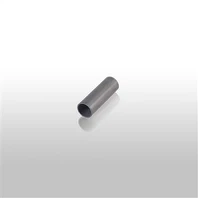Advanced ceramics represent a class of materials with exceptional properties that go beyond those of traditional ceramics. These materials find diverse applications across various industries, owing to their unique combination of mechanical, thermal, and electrical properties.
Electronics Industry
One significant application of advanced ceramics is in the field of electronics. Ceramic materials such as alumina (aluminum oxide) and zirconia serve as essential components in electronic devices. They are used in the production of insulating substrates, circuit boards, and packaging for electronic components. The excellent electrical insulating properties of ceramics make them ideal for ensuring the reliable performance of electronic systems by preventing electrical leakage and providing thermal stability.
Automotive Industry
In the automotive industry, advanced ceramics contribute to the development of high-performance components. Ceramic matrix composites (CMCs) are employed in the production of brake discs as they exhibit superior wear resistance and thermal stability compared to traditional materials. Additionally, ceramics are used in engine components, such as spark plugs and diesel engine glow plugs, benefiting from their high melting points and resistance to thermal shock.
Medical Application
The medical field also leverages advanced ceramics for various applications. Bioceramics, which include materials like alumina and hydroxyapatite, are used to make bone implants and dental prosthetics because they are biocompatible and can work with living tissues. Advanced ceramics are also employed in medical imaging technologies, such as X-ray tubes and ultrasound transducers, where their electrical and thermal properties contribute to the precision and efficiency of the devices.
Aerospace Industry
The aerospace industry relies heavily on advanced ceramics for their lightweight and high-temperature capabilities. Components like turbine blades in aircraft engines often incorporate ceramics to withstand the extreme conditions of combustion and contribute to fuel efficiency. Moreover, heat-resistant tiles on the surface of spacecraft, such as the space shuttle, are made from advanced ceramics to protect against the intense heat generated during re-entry into Earth's atmosphere.
Energy Sector
In the energy sector, advanced ceramics play a crucial role in the development of efficient and sustainable technologies. Solid oxide fuel cells (SOFCs) use ceramic electrolytes to convert chemical energy directly into electricity, offering a cleaner and more efficient alternative to traditional power generation methods. Ceramics are also employed in thermal barrier coatings for gas turbines, enhancing their performance and longevity.
In short, advanced ceramics have become indispensable in various industries, driving technological advancements and enabling the development of innovative products with enhanced performance and durability. From electronics to healthcare, automotive to aerospace, and energy applications, the unique properties of advanced ceramics continue to shape and redefine the possibilities of modern engineering and technology.




